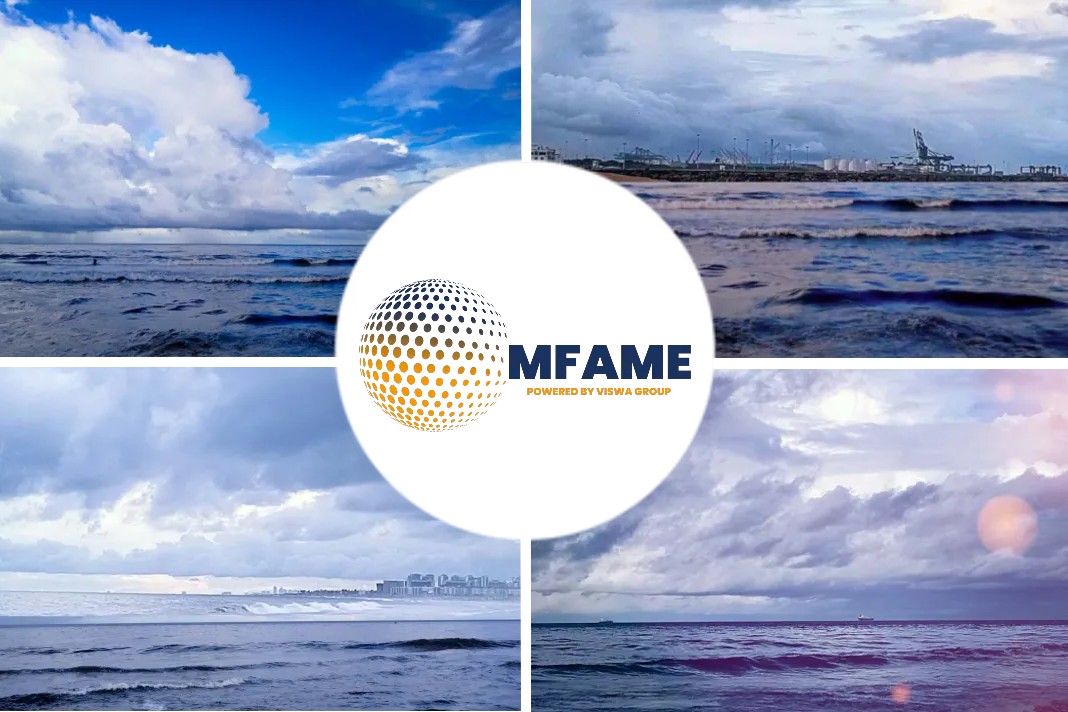A move by China to save the planet has delivered a price shock to the global shipping industry just as it was starting to emerge from its worst slump in almost a decade.
China manufacturers make 90 percent of all containers used on ships to carry all manner of finished products and commodities around the world. They’re the workhorses of the global economy. As part of their pledge to cut emissions by 70 percent by the end of this year, these companies are coating containers with water-borne paints that release less toxic fumes than oil-based varieties before China starts levying a green tax in January 2018.
It’s a noble effort—yet one that’s delivered an unintended blow to the shipping industry. About 70 percent of container production capacity in China has been shut down as manufacturers retool their factories to allow for the usage of the new paints, sending prices soaring as much as 69 percent from last year’s lows, said Teo Siong Seng, chief executive officer at Singamas Container Holdings Ltd., the world’s No. 2 maker.
“This isn’t what shipping companies would want just as the industry is showing some life,” said Park Moo-hyun, an analyst at Hana Financial Investment Co. in Seoul. “But they also do realize environment is important. They will have to adapt to these changes even if it means higher costs.”
The fumes from oil-based paints used on ships and containers have been identified for years by scientists as a possible contributor to greenhouse gases and health threat to workers. Ship builders shifted to environmentally friendly water-based alternatives in around 2008. Now container makers are doing their bit to help limit emissions believed to contribute to climate change.
The shift in paint material started in July 2016 in the southern province of Guangdong under an initiative by the China Container Industry Association to reduce the emission of volatile organic compounds. The parties to the agreement are China International Marine Containers Group Co., Singamas, CXIC Group Containers Co., and China Shipping Investment Co., covering 46 manufacturers under the four groups.
Paint suppliers including Hempel A/S, Cosco Kansai Paint & Chemicals Co., Chugoku Marine Paints Ltd., KCC Corp. and Valspar Corp. agreed to support the container manufacturers under the agreement. For the paint makers, the switch is an opportunity as Singamas estimates water-based paint containers account for only about 3.5 percent of the global fleet at present.
Singamas has halted operations at some of its six plants in China to revamp production lines. Its biggest rival China International Marine Containers is also adjusting its capacity to adopt the initiative, Teo said.
Adjusting production lines isn’t the only reason causing the shortage. Water-borne paints need more time to dry. Typically for a 20-foot container, it would take about 20 hours to dry, compared with four hours for conventional paints. Waterborne paint is more expensive and the productivity is lower with higher labor costs, according to Singamas.
Containers that are coated with waterborne paint are about $180 to $200 more expensive to buy than using solvent ones and companies have invested “a lot of money” to modify their production lines, Singamas said. Last month, the company said it took orders at $2,200 per 20-foot box, compared with the lows of about $1,300 in September last year.
“The steep rise can be attributed to all container factories switching to using more environmentally friendly—but costlier—water-based painting systems,” said Nilesh Tiwary, analyst at Drewry Financial Research Services in New Delhi.
Hyundai Merchant Marine Co., South Korea’s biggest box carrier, said in an email that although costs will somewhat increase, it would follow global regulations to protect the environment. A.P. Moller-Maersk A/S, the operator of the world’s biggest container line, said it expects prices to increase during the broader industry’s transition to water-borne paint as it temporarily constrains factory capacity.
The supply shortage precedes the shipping industry’s peak season—typically around July to October—when retailers in the U.S. and Europe increase inventory ahead of the year-end holidays. The spurt in seasonal demand could further lift box prices, said Andrew Lee, a Hong Kong-based analyst at Jefferies Group LLC.
The higher costs are likely to pinch the container-shipping industry, which is seeing signs of a recovery after the collapse of South Korea’s Hanjin Shipping Co. last year and a pickup in global trade. A reorganization of major lines has helped firm up freight rates in a respite to the industry that has battled excess capacity and discounts since the 2008 financial crisis.
“Things which increase the cost base of the industry will hurt the weaker container lines, and may speed further consolidation,” said Steve Saxon, a partner at McKinsey & Co. in Shanghai. “In the longer-term, the cost increase is likely passed on to the customer.”
Did you subscribe for our daily newsletter?
It’s Free! Click here to Subscribe!
Source: Bloomberg





















